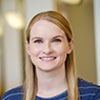This article is more than 5 years old.
Earlier this week, I co-presented with a former colleague at the South Carolina Library Association/Southeastern Library Association joint conference in Greenville, South Carolina. My presentation was late in the day, so I had the opportunity to sit in on several interesting and relevant presentations.
Keynote Speaker ALA President-Elect Courtney Young: To open the conference, Young spoke about the current ALA presidential theme, Libraries Change Lives, and encouraged librarians to sign the Declaration for the Right to Libraries and libraries to host signing events. Young then spoke about her upcoming presidential theme, which will focus on the value of the ALA to both its members and the community at large.
Services and Spaces for Graduate Students: Data-Driven Decision Making in an Academic Library: Florida State University librarians recently underwent a large-scale ethnographic study of their non-STEM graduate student population. They modeled their study off of the Foster and Gibbons University of Rochester study, which included methods like photo diaries and charrettes. The FSU librarians also GPS tracked 10 students to see where they went throughout the day. They learned that their graduate students wanted multi-use/multi-functional spaces, room to spread out, and double monitors . Some barriers to using the library included working long hours, families, finding parking, and having cheaper/healthier food options at home. As a result of the study, they expanded their campus delivery service to graduate TAs and plan to use the findings when planning future renovations. Also, if you are curious, you can see their current grad student space, the Scholars Commons. I have a lot more notes if you are interested.
Teaching Online Library Workshops: Next, Clemson University librarians spoke about their experiences with two online instruction initiatives. First, they moved their freshman orientation sessions online (previously, they hosted over 200 orientation sessions in the library). They used VideoScribe to make some seriously awesome Youtube videos and embedded them in Blackboard. Go watch, What’s In It For Me?, an alphabetical listing of items in Clemson Libraries and come back. No, seriously, go watch, I’ll wait here. Pretty nifty, right? Second, they used their campus conference software, Adobe Connect, to host synchronous, online workshops on topics like Google searching. Attendance was less-than-stellar, but they found that after the sessions several students asked questions unrelated to the topic at hand — and this brought about interesting conversations on using conferencing software (or even Google Hangout) to host personal research sessions. We also discussed the advantages of quality over quantity in reference/instruction interactions. Sounds like they are trying some exciting things!
The Flipped Classroom: A Real Life Adventure in Engaging Students: this was our session! I co-presented with my former colleague, Margaret Fain, of Coastal Carolina University. We spoke for about 10 minutes about flipping our Information Literacy Lab credit course at Coastal — then we flipped the presentation (because, of course)! Our attendees created a flipped classroom lesson plan and then shared their lessons with the group. I’m having a SlideShare to WordPress embed fail, but if you’d like to see our slides, here they are.
Unfortunately, I had to drive to Greenville and back in a day, so I didn’t get to experience much of Greenville. That being said, from my car window, it looked really great! It seem to have a happening downtown, lots of restaurants, shops and even a park downtown with a waterfall. It has officially hopped onto my weekend-road trip list!

5 Comments on ‘Amanda at SCLA/SELA 2013’
It sounds like an interesting day. And what a way to “teach by doing”, flipping your presentation like that! Good show!
Great report, Amanda. I had that same Slideshare/Wordpress fail but Kevin has the magic touch and can fix it for you, I’m sure!
Good job. I wasn’t gonna watch the Clemson video, but since you promised to wait, I did. Pretty cool.
I enjoyed your presentation slides too – especially the cartoon about choosing keywords carefully LSHSS. Everyone reading this comment should go look at that right now……..
I like the idea of flipping your presentation also, what a good way to engage the audience!
Thanks for the update – that video is cute. Makes my ideation go wild!!